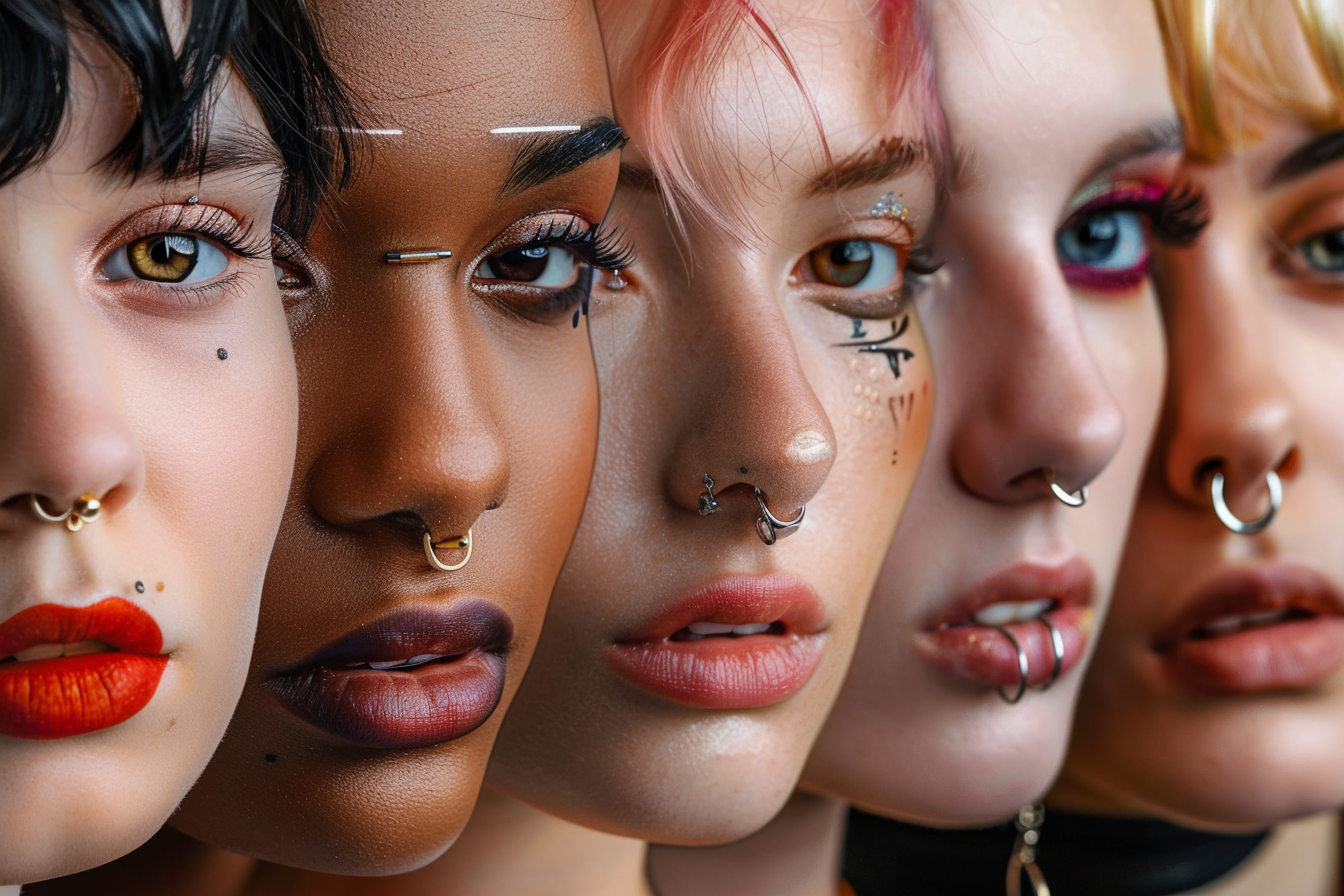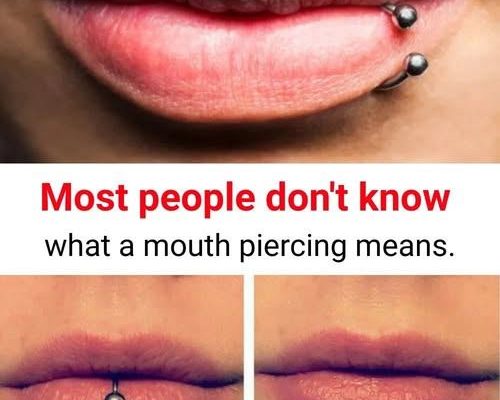Mouth piercings—whether on the lips, tongue, or cheeks—have become a popular form of self-expression. These body modifications are often seen as bold, creative, and individualistic. But beyond aesthetics, mouth piercings can hint at personality traits, emotional motivations, and come with important health implications.
In this article, we’ll explore what various mouth piercings might suggest about a person, the psychology behind getting them, and the potential health risks you should be aware of.
Types of Mouth Piercings and Their Meaning

1. Lip Piercings
Lip piercings include styles like labret (center of the lower lip), Monroe (upper lip, mimicking a beauty mark), Medusa (philtrum area), and snake bites (both sides of the lower lip). These piercings are often chosen by people who want to express confidence, individuality, or a rebellious streak.
Lip piercings may signal openness to new experiences and a strong desire to personalize one’s appearance. Though not scientifically conclusive, social psychology research suggests visible facial piercings are often associated with independence and non-conformity.
2. Tongue Piercing
Tongue piercings are generally less visible but symbolically bold. They are most common among young adults and tend to be associated with curiosity, experimentation, and sometimes risk-taking behaviors.
Psychologically, the tongue relates to communication and identity. A piercing in this area might suggest that someone values expression, autonomy, or a degree of edginess in personal style.
3. Cheek (Dimple) Piercing
Cheek piercings, placed where natural dimples appear, are rarer and more complex. Choosing a cheek piercing can signal creativity, uniqueness, and a desire to stand apart from conventional norms.
Because of their placement and healing challenges, cheek piercings may also reflect a willingness to accept pain or risk for the sake of appearance or self-expression.
Psychological Motivations Behind Mouth Piercings
While style plays a major role in piercing decisions, there are deeper emotional and psychological motivations as well:

1. Self-Expression and Identity
Many individuals get piercings as a form of self-definition. It’s a way of saying, “This is who I am,” especially during phases of personal growth or life transitions. Young adults, in particular, use body modifications to assert independence and break away from societal or parental expectations.
2. Belonging to a Subculture
Mouth piercings are common in various subcultures—punk, goth, alternative fashion, LGBTQ+, and more. Within these communities, piercings act as symbols of shared identity, unity, and resistance to mainstream standards.
3. Emotional Healing and Body Autonomy
Some people report that getting a piercing is an emotional or symbolic act—marking a new beginning, reclaiming control over their bodies, or expressing empowerment after trauma. This therapeutic effect isn’t uncommon in body modification culture, though it varies widely by individual.
Health Risks Associated with Mouth Piercings

Despite the appeal of mouth piercings, they come with significant oral health considerations:
1. Infection
The mouth contains hundreds of species of bacteria. Any open wound, including a piercing, can become a site of infection if not cared for properly. Symptoms can include pain, swelling, redness, and pus.
2. Tooth and Gum Damage
Tongue and lip jewelry can rub against teeth and gums, causing enamel wear, gum recession, and even cracked teeth. Studies have confirmed an increased risk of dental trauma among people with oral piercings.
3. Speech and Eating Interference
Especially in the early healing phase, mouth piercings can affect pronunciation, cause lisping, and make eating uncomfortable. Long-term impacts may occur if jewelry shifts or irritates the tissue.
4. Allergic Reactions and Nerve Damage
Some individuals may react to certain metals like nickel. Nerve damage, though rare, is also a possible complication if the piercing affects oral nerves, potentially causing numbness or tingling.

Safe Practices for Getting and Maintaining a Mouth Piercing
If you’re considering a mouth piercing, follow these essential safety tips:
- Choose a certified piercer: Always go to a licensed, reputable studio that follows proper sterilization practices.
- Use hypoallergenic jewelry: Titanium, surgical-grade stainless steel, and bioplast are safer options.
- Follow aftercare instructions: Rinse with saline solution, avoid touching the area, and refrain from smoking or drinking alcohol during healing.
- Maintain good oral hygiene: Brush twice daily, floss carefully, and avoid harsh mouthwashes that contain alcohol.
- Visit your dentist regularly: Let your dental professional know about the piercing so they can monitor for any signs of damage or infection.
What Does Your Mouth Piercing Say About You?
While no piercing defines a personality entirely, some general traits are often associated with certain styles:
| Piercing Type | Associated Traits |
|---|---|
| Lip | Confident, expressive, independent |
| Tongue | Curious, bold, communicative |
| Cheek | Artistic, unconventional, attention to detail |
It’s important to remember that everyone’s reason for getting a piercing is personal. Whether it’s aesthetic, symbolic, or both, what matters most is that it aligns with your values and lifestyle.
Final Thoughts
Mouth piercings are more than trends—they’re personal choices that often carry emotional, psychological, and social significance. Whether you’re thinking of getting one or just exploring their meaning, it’s important to consider both the expressive potential and health impact.
Make informed decisions, choose professional studios, and follow aftercare guidelines carefully. Your piercing should be not only a reflection of your personality but also a choice that supports your overall well-being.

